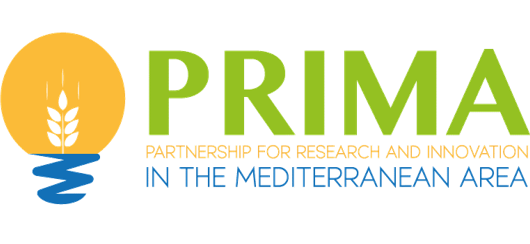ABSTRACT:
A three-year experiment (2015–2017) was conducted under the semiarid conditions of the Hydrogeological Unit Eastern Mancha (HUEM) (Spain), using the optimized regulated deficit irrigation for a limited amount of irrigation water (ORDIL) methodology on barley. Five irrigation treatments were performed during the experiment: no deficit (ND), 100% (T100), 90% (T90), 80% (T80), and 70% (T70) of barley net typical irrigation requirements (2500 m3 ha-1) in the area. The aim was to determine the effect of ORDIL: 1) on the quality of grain and malt; 2) on the profitability and use of water at farm scale; and 3) on the profitability and sustainability of the HUEM. Despite using less water, ORDIL treatments showed no significant differences in grain quality with respect to ND, while T80 achieved the highest economic water productivity (average 0.17 € m-3). Thus, by using T80 instead of ND and increasing the irrigated area of barley on the farm by 14%, it is possible to save up to 31% of water with the same profitability. This amount of water could be used for more profitable crops, increasing the profitability of the farm. The use of ORDIL at basin scale, using T80 instead of ND and increasing the cultivated area by 9%, could have saved up to 55.9 hm3 over the 3 experimental years (16% of annual extractions in the HUEM). Supplying this water to more profitable crops, the profitability of the basin could have increased by up to 44.4 M€. In the case of saving this amount of groundwater, piezometric levels would have risen, decreasing the pumping costs and improving the environmental conditions in the area. Consequently, applying ORDIL in lowprofit crops, such as barley, and in water scarce areas, could improve the profitability and/or the sustainability of agricultural systems, maintaining the production.
Keywords: Hordeum vulgare L. MOPECO model ORDIL Malting process Semiarid
Abstract
Abstract: The expansion of irrigated almond orchards in arid and semi-arid areas with scarce water available raises key issues related to the sustainability of the water resources. A 3-year field experiment was conducted on a commercial young almond orchard located in the southeast of Spain to study the effect of two drip irrigation systems (surface, DI and subsurface, SDI) on almond crop growth and their physiological responses under fully-irrigated conditions. Crop evapotranspiration (ETc) and its components (crop transpiration, Tc and soil evaporation, Es) were monitored as well as the irrigation water and nitrogen productivities. To estimate ETc, a simplified two-source energy balance (STSEB) approach was used. Although a lower irrigation water amount was applied in SDI compared to DI (differences between 10% and 13.8%), the almond crop growth and physiological responses as well as the yield components and kernel yield showed no significant differences. The ETc estimates resulted in small differences for spring and fall periods (0.1–0.2 mm day−1 ) for both treatments, while differences were significant during higher ETo periods (May–August), being 1.0–1.3 mm day−1 higher for the DI treatment than for the SDI treatment. The irrigation water productivity (IWP) was significantly higher in the SDI treatment than in the DI treatment. However, no significant differences between the two treatments were observed for nitrogen productivity. It can be concluded that the SDI system is a suitable strategy for irrigating almond crops, reducing consumptive water use and increasing IWP.
Keywords: plant-water status; crop evapotranspiration; simplified two-source energy balance; irrigation water productivity; nitrogen productivity
Agriculture must improve the productivity of irrigation water due to several factors, such as global warming, the increasing water demand of other sectors, or the protection of the environment. The “optimized regulated deficit irrigation for limited volumes of water” (ORDIL) methodology may contribute to reach this objective by optimizing the allocation of irrigation water during the growing cycle when the available volume is lower than the crop irrigation requirements. ORDIL was applied to a barley crop in a 3-year (2015–2017) field test under the semiarid conditions of Albacete (Spain). The main aim was to assess the influence of ORDIL on the physiological response of barley. The specific objectives were: 1) Identify if stomatal conductance (gs), net assimilation rate (An), intrinsic water use efficiency (WUEi) and total dry matter (TDM) evolution can be used as early and sensitive indicators of barley water status and crop performance; 2) Provide a mechanistic basis to understand barley physiological response to deficit irrigation at the most sensitive stages and; 3) Evaluate barley physiological response to ORDIL and its relation with yield. Thus, five irrigation treatments were performed. One without deficit (ND), and four with limited volumes of irrigation water (100%, 90%, 80% and 70% of typical irrigation needs). According to the results, gs was a reliable variable to detect early water deficit in barley. Besides, critical thresholds for this variable were found to optimize irrigation and to avoid chronic physiological damages affecting the most sensitive and yield-related stages. In summary, the physiological approach applied in this study validates ORDIL methodology being useful for future irrigation scheduling and distribution improvements. © 2022 Elsevier B.V.
In the Castilla-La Mancha (CLM, Spain) region, most of the irrigated area is managed by two different strategies in which the previously defined irrigation requirements of crops affect both the distribution of crops and the sustainable management of groundwater resources. Thus, in the western Mancha system, the amount of irrigation water per farm is limited, while in the eastern Mancha system the irrigable area per farm is limited. Therefore, the use of average irrigation requirements in these areas may cause yield drops in dry years and the overuse of groundwater. Consequently, the main aim was to achieve a better approach to the irrigation requirements of the main extensive crops in CLM (maize (Zea mays L.), onion (Allium cepa L.), garlic (Allium sativum L.), and barley (Hordeum vulgare L.)) to help farmers and water authorities achieve higher yields and a more sustainable use of water resources. The typical meteorological year (TMY) methodology combined with the MOPECO model were used to: (1) determine the distribution of wet, intermediate, and dry years during the growing cycle of the four selected crops; (2) determine the average (AVE) and typical irrigation requirements of these crops for the complete 70 years series (TMYG) or the duration of the crop cycle (TMYC), and under wet (TMYW), intermediate (TMYI), and dry (TMYD) year conditions; and (3) recommend the irrigation depths to be used for the management of farms and water bodies. The results show that the number of wet, intermediate, and dry years depends on the growing cycle of the crop considered, with wet years being unusual, although they notably increase the average rainfall in the area. The irrigation requirements for the average year were between 20.4 and 9.0% lower than the average irrigation requirements calculated for the four studied crops during the 70 years of the series. For western Mancha farmers the recommended irrigation depth for dry years and most profitable crops (garlic and onion) is the one calculated for the driest year of the series, while for the rest of the years and crops is that estimated by the global dry TMY (TMYGD). For eastern Mancha farmers the recommended irrigation depths are also those estimated by the TMYGD. © 2022 by the authors.
Keywords:
climatic series; typical meteorological year; average year; MOPECO; garlic; barley; onion; maize

